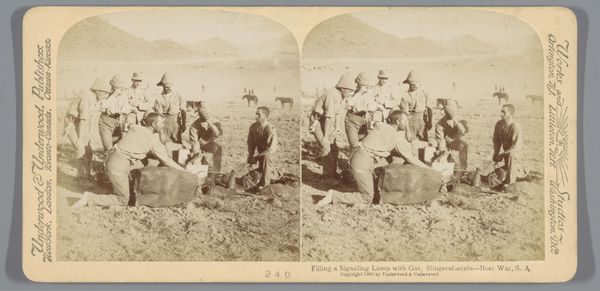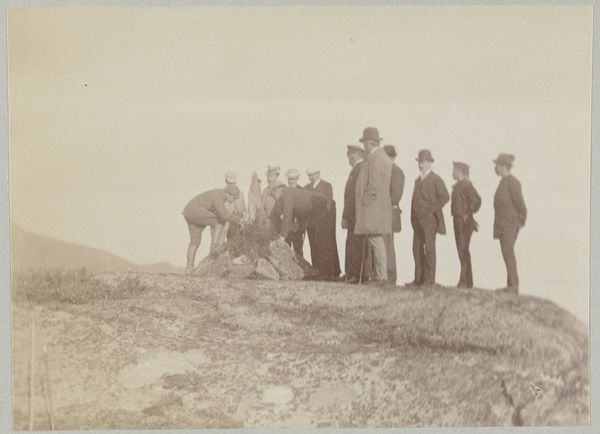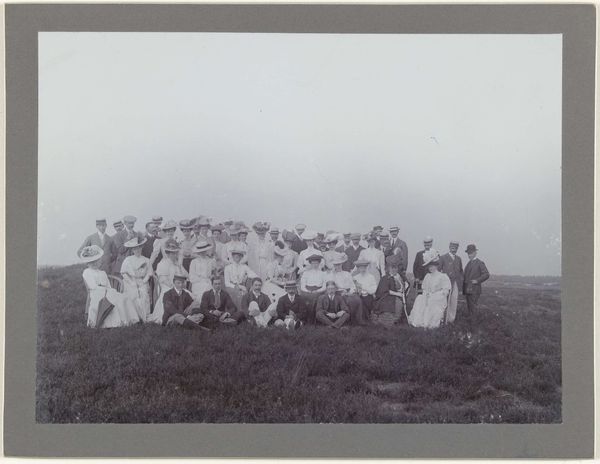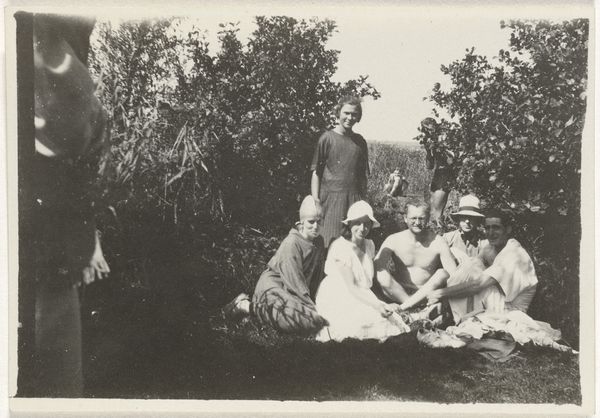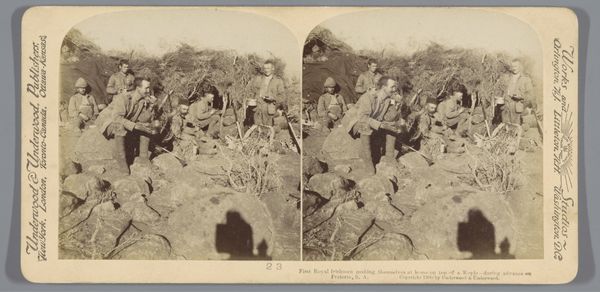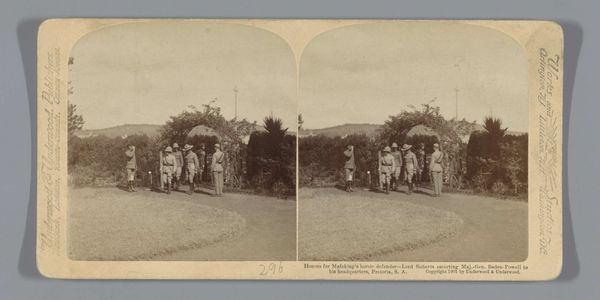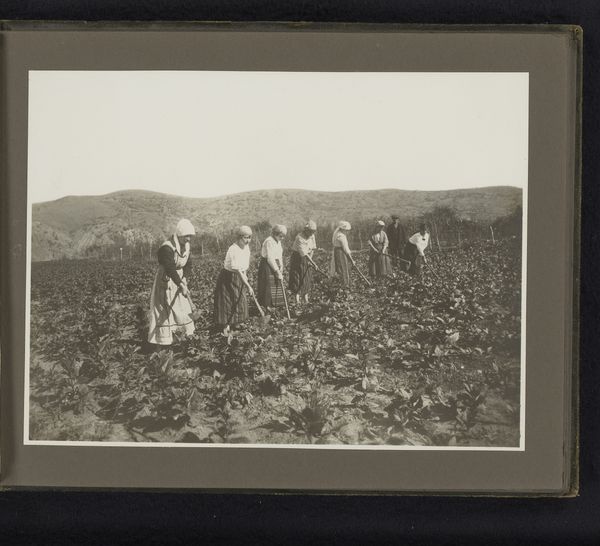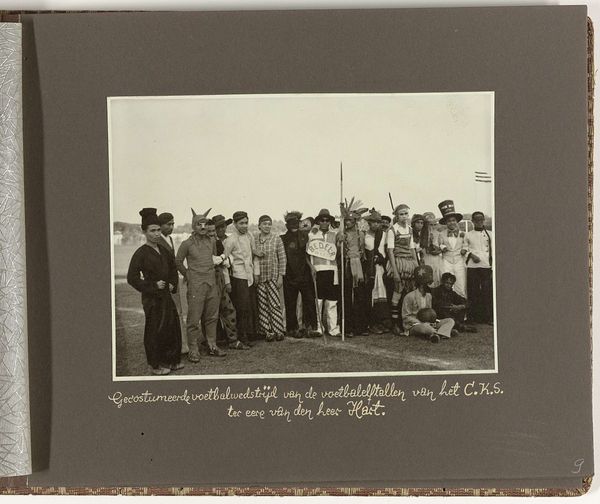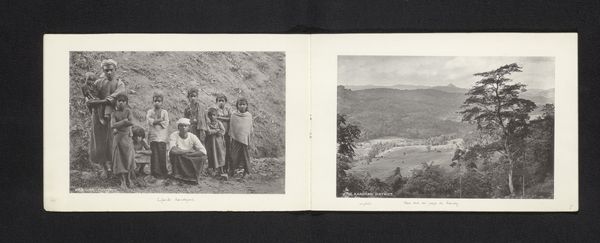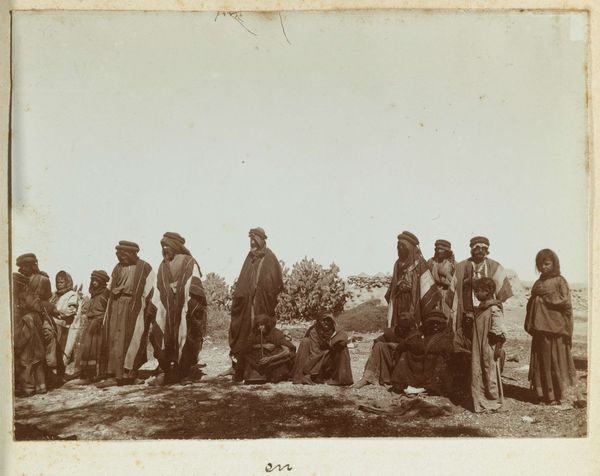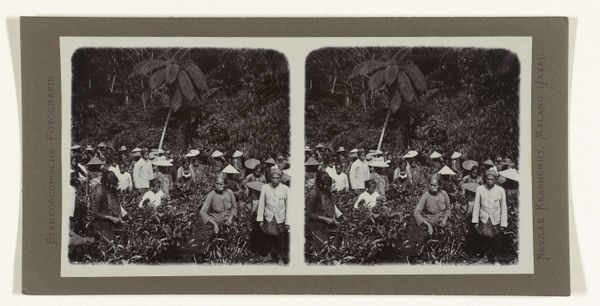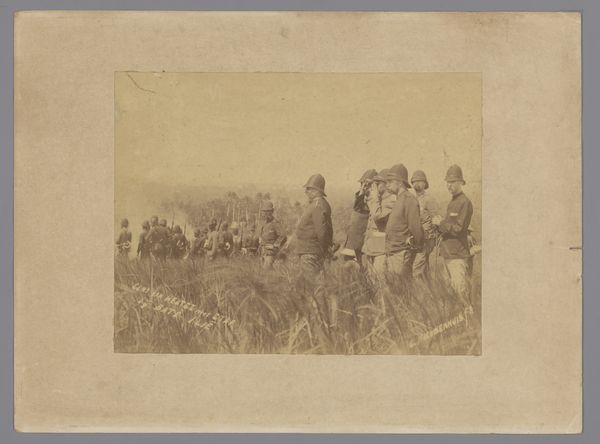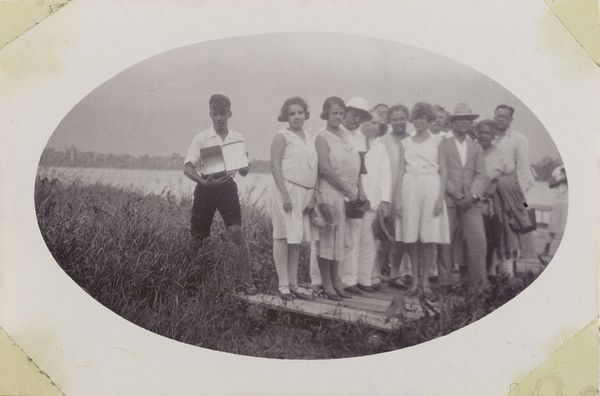
photography
#
portrait
#
pictorialism
#
landscape
#
photography
#
group-portraits
Dimensions: height 70 mm, width 145 mm
Copyright: Rijks Museum: Open Domain
Editor: Here we have “Groepsportret in een bergachtig landschap” by Geldolph Adriaan Kessler, dating from around 1895 to 1903. It’s a photograph showcasing a group of people, and there’s something about the soft focus that feels both dreamlike and nostalgic. What do you see in this piece, especially concerning the visual language? Curator: It's compelling how Kessler uses this almost ethereal style for a group portrait. Notice how the landscape isn’t merely a backdrop but seems to interact with the figures. What symbols of status and social structure can we observe? Look at their clothing and the walking sticks; they signify leisure, a detachment from labor, projecting authority. How does the light play on these elements to convey specific messages? Editor: It does make them seem rather well-off! The landscape almost romanticizes their status, I think. Is the composition itself sending any message? Curator: Precisely. The framing situates them above, observing the land. This isn't accidental. Think about the history of landscape art – the symbolic value of "owning" a view, which ties back into concepts of power. The photograph also evokes memory, does it not? These aren't just individuals; they represent an ideal, a constructed narrative about a group and its place within the world. Consider the psychological weight of such representations. Editor: That’s a fascinating point. So, even a seemingly straightforward group portrait becomes loaded with these layers of meaning? Curator: Absolutely! Photography at that time wasn’t just capturing reality; it was curating a version of it. It served a role in shaping collective memory and confirming a social hierarchy through powerful, persistent imagery. Editor: I never would have considered that depth, initially, it is not intuitive, but thanks to your expert input I understand how pictures speak to identity. Curator: And it's those nuanced readings that unlock the real richness in art! Now, how might our interpretation change if the sitters were a different social class, depicted similarly?
Comments
No comments
Be the first to comment and join the conversation on the ultimate creative platform.
